Step inside one of the most advanced wildlife health and science facilities in Canada
This leading-edge facility is a hub of veterinary medicine, animal welfare, nutrition and reproductive sciences, conservation breeding and field conservation research. Purpose-built to meet the highest standards of care, it supports both the everyday and extraordinary health needs of the animals that call our Zoo home.
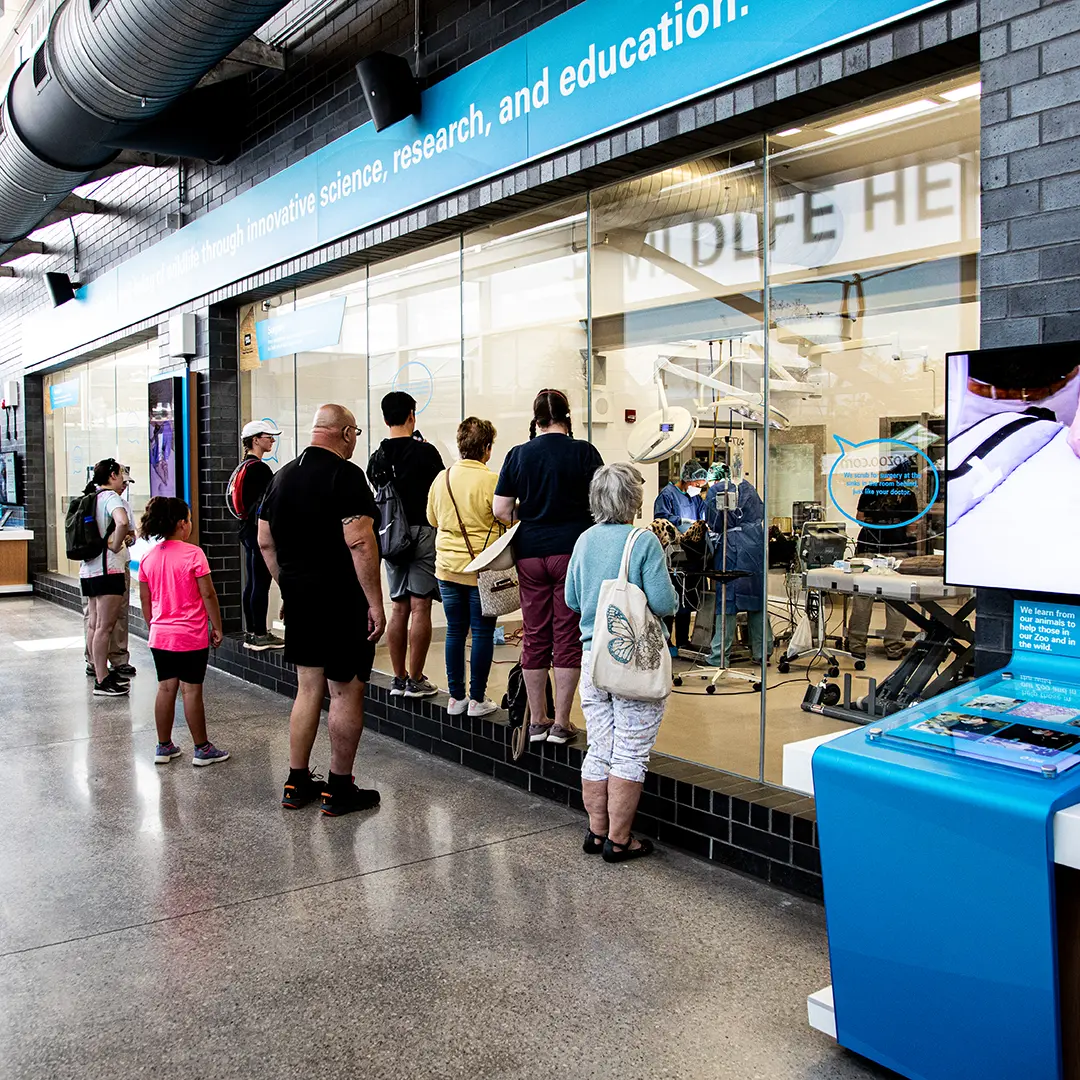 Witness
Witness 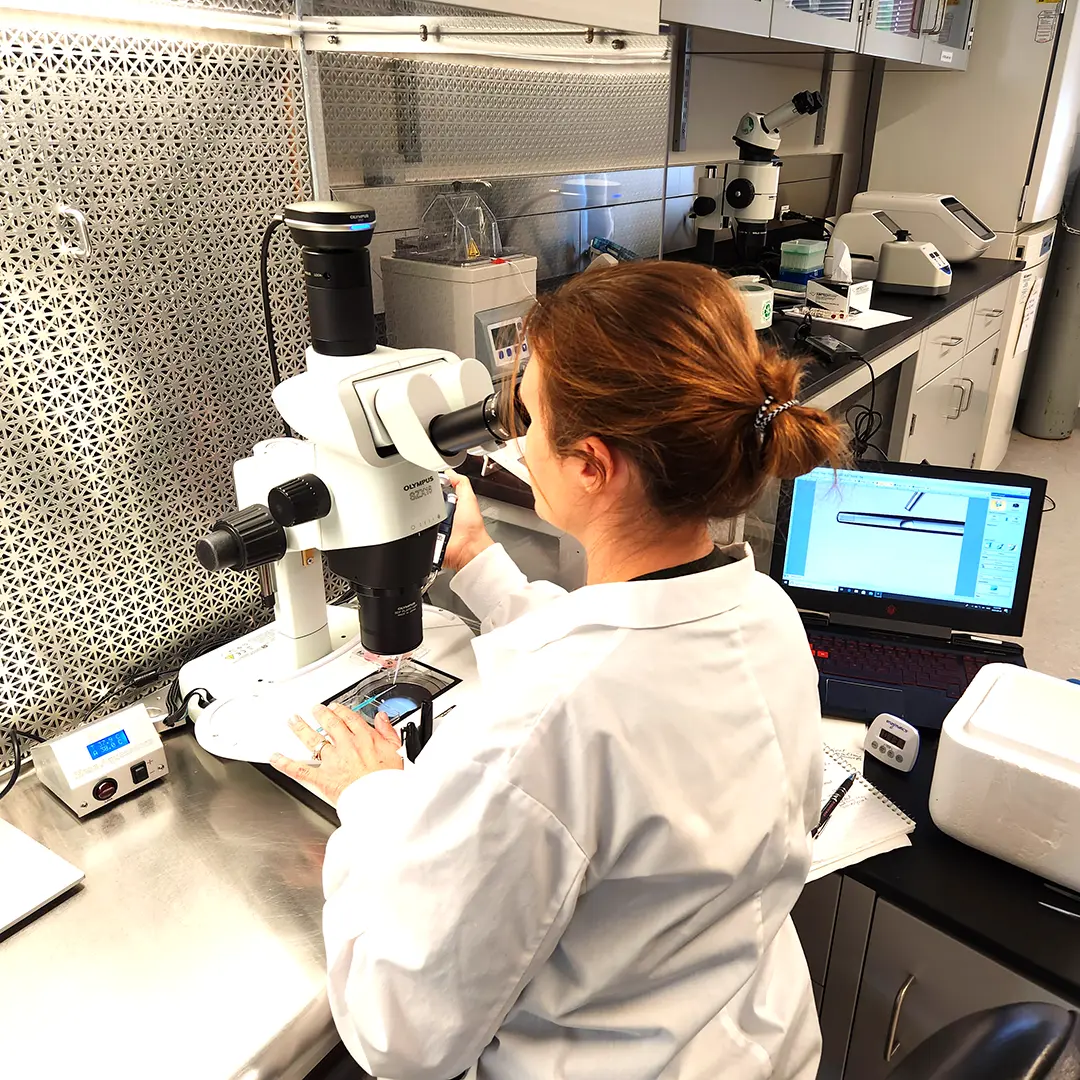 Conservation in Action
Conservation in Action 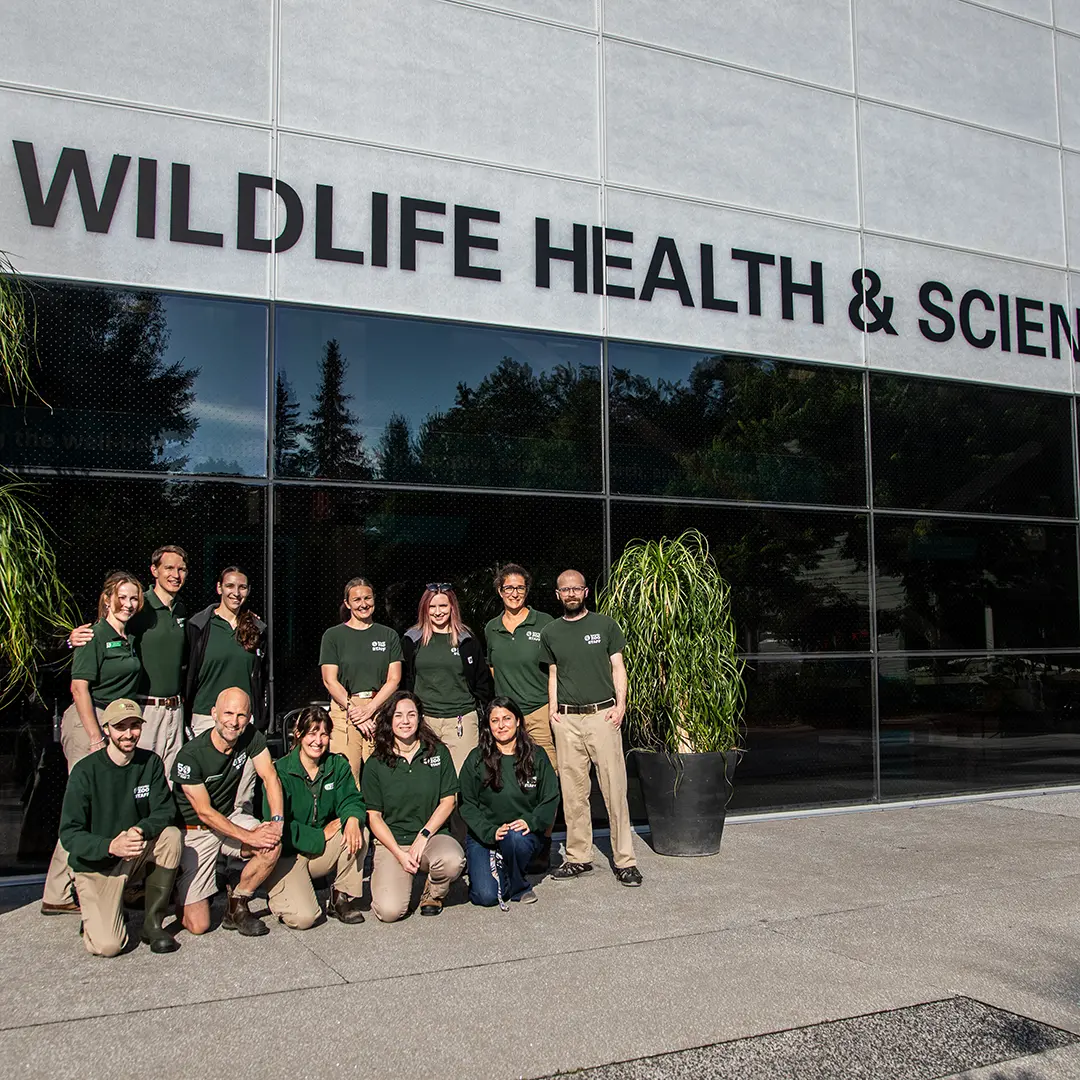 Partnerships & Collaboration
Partnerships & Collaboration 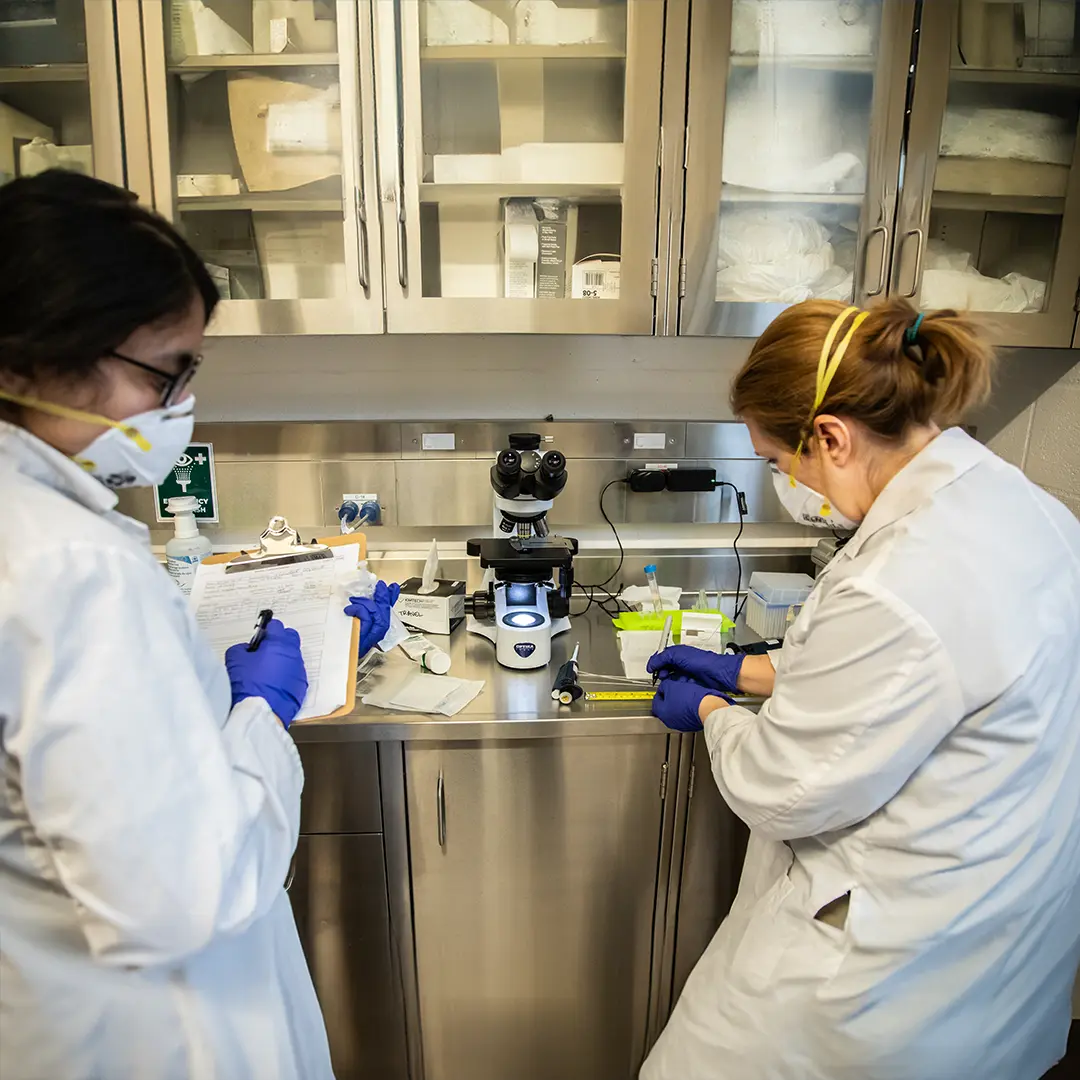 Training the Next Generation
Training the Next Generation 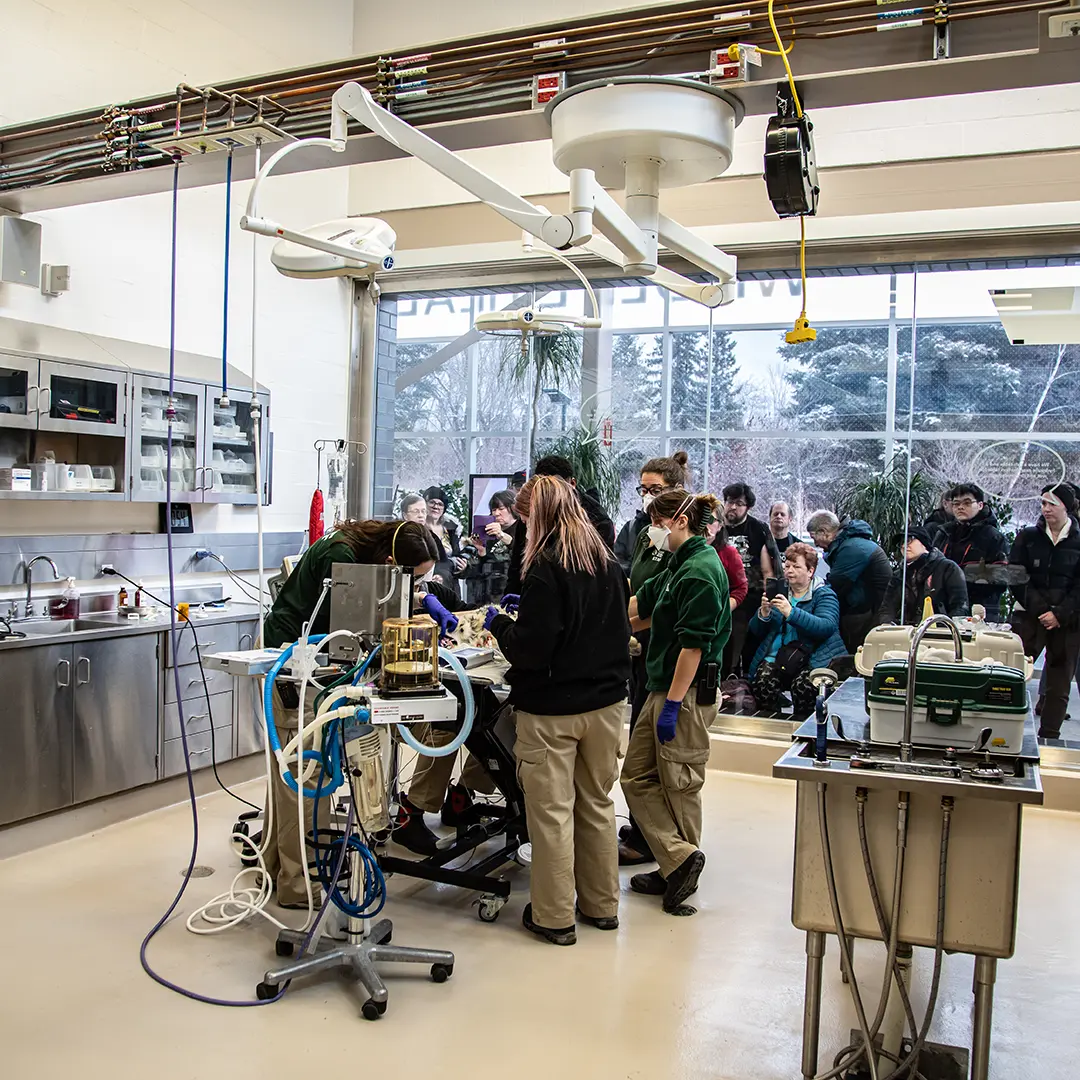 Designed for Innovation
Designed for Innovation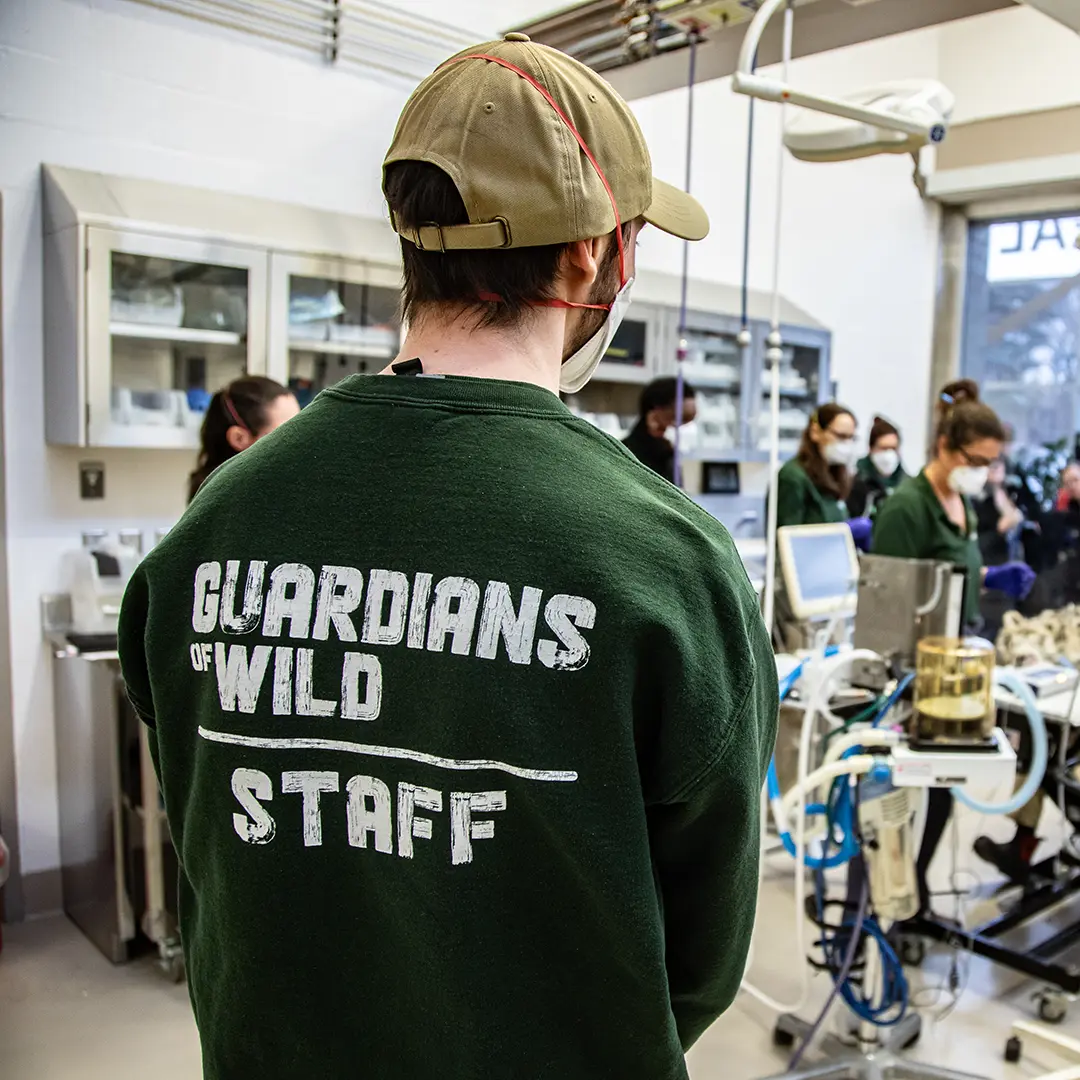 Guided Tour
Guided Tour 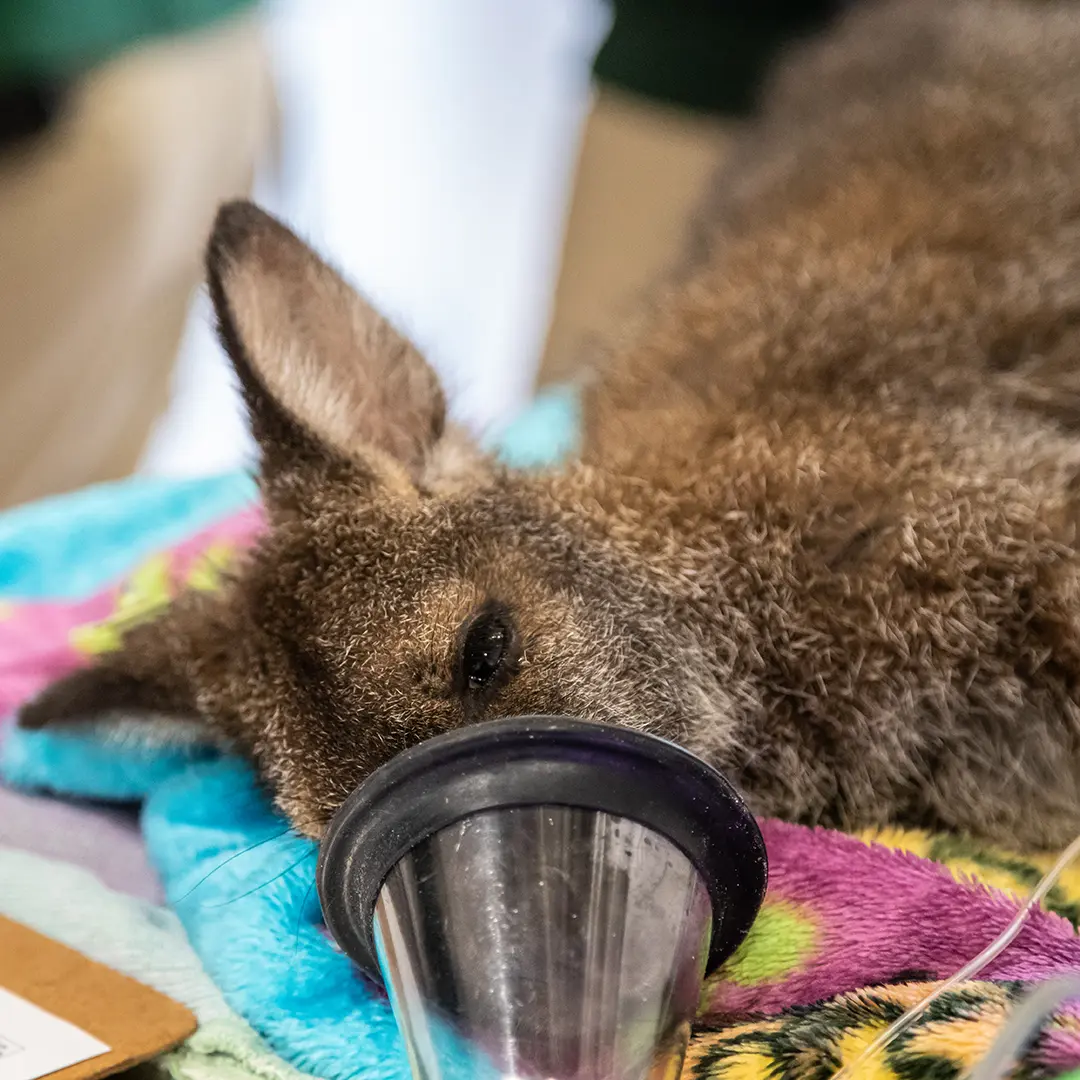 Donate
Donate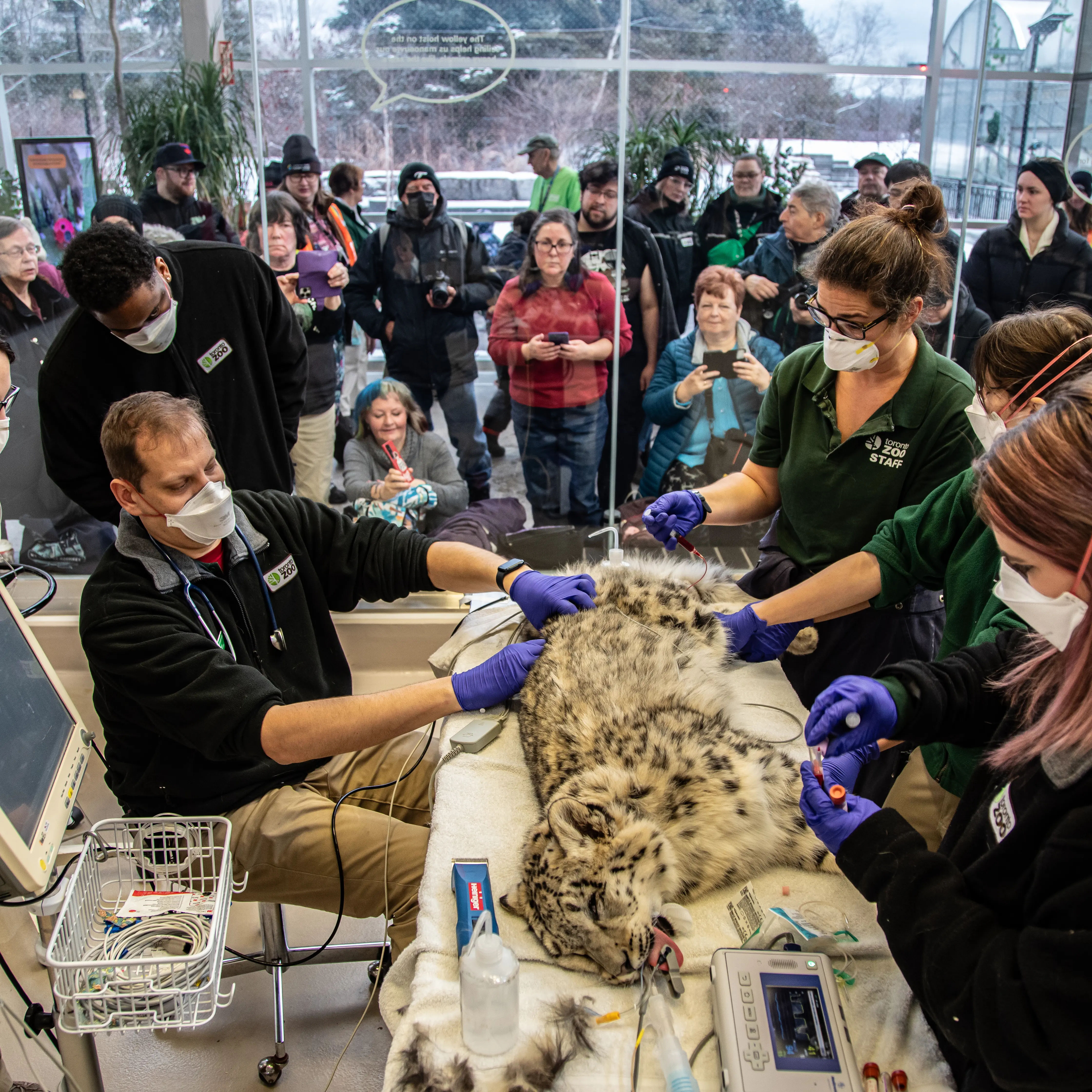
Witness
Open Daily - Free With Admission
What truly sets the Wildlife Health & Science Centre apart is the opportunity to see it in action. Through our public viewing gallery, guests get an exclusive look behind-the-scenes to the high-level care provided by our dedicated team. Peek into rooms where real medical procedures and scientific investigations take place, including:
- Diagnostic Imaging
- Surgical Suite
- Treatment and Recovery
- Clinical and Endocrinology Labs
Designed to educate and inspire, the Centre bridges the gap between wildlife well-being and public engagement—offering a rare window into the medical and scientific expertise that powers our wildlife conservation efforts.
Find the Wildlife Health & Science Centre near the Tundra Zoomobile Station, just past the Greenhouse.
Come discover the incredible science behind wildlife care and conservation.
Conservation in Action
Inside the Wildlife Health & Science Centre

Wildlife Health: Clinical Spaces and Facilities
Thoughtfully designed workspaces give our veterinary team the room and resources they need to collaborate and innovate—whether responding to an emergency or advancing a new research initiative.
Modern treatment, surgical, and laboratory areas enhance our capacity to care for animals of all sizes. Outfitted with imaging technologies, such as digital X-ray and ultrasound, and other specialized equipment, these spaces allow for efficient diagnosis and recovery, and high-precision procedures.
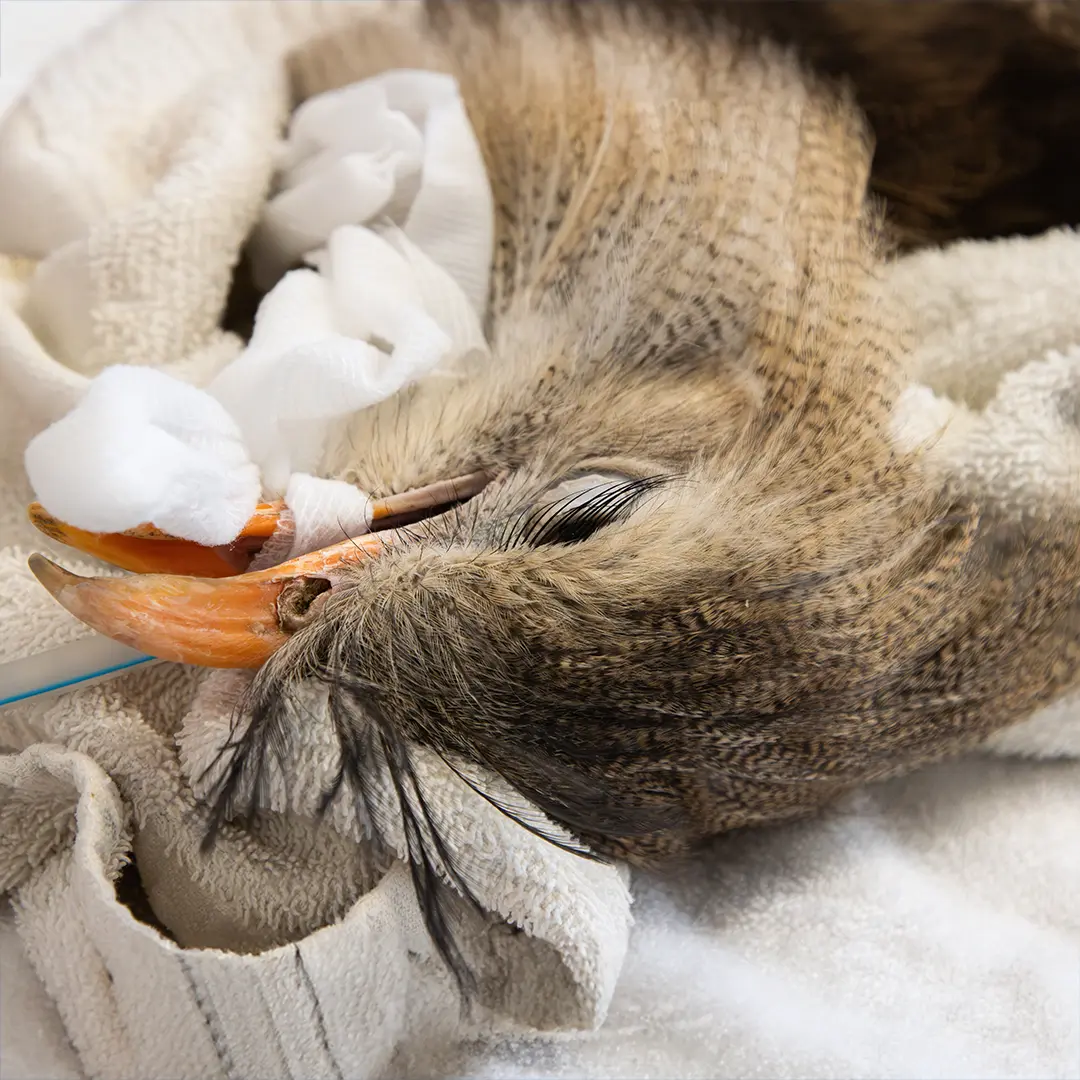
Preventative Medicine
From regular health checks and bloodwork to diagnostic imaging and neonatal care, our focus on prevention reduces illness and improves outcomes. Many animals are trained to participate voluntarily, making care more comfortable and effective.
Wildlife Critical Care
Thirty dedicated care units accommodate animals of various sizes and needs. Each one is designed to provide privacy, reduce stress, and support post-operative recovery, complete with access to outdoor spaces.

Reproductive Science
The Centre houses Canada’s only dedicated zoo-based Reproductive Science program for wildlife and Canada’s most diverse biobank storing genetic material from over 100 different species.
Reproductive Health
Through the gallery window, you can watch researchers prepare a variety of biological samples for hormone analysis including progesterone, estrogen, and testosterone or stress-related hormones like cortisol. This information provides us with a better understanding of reproductive health and an overall sense of individual or population-level well-being.
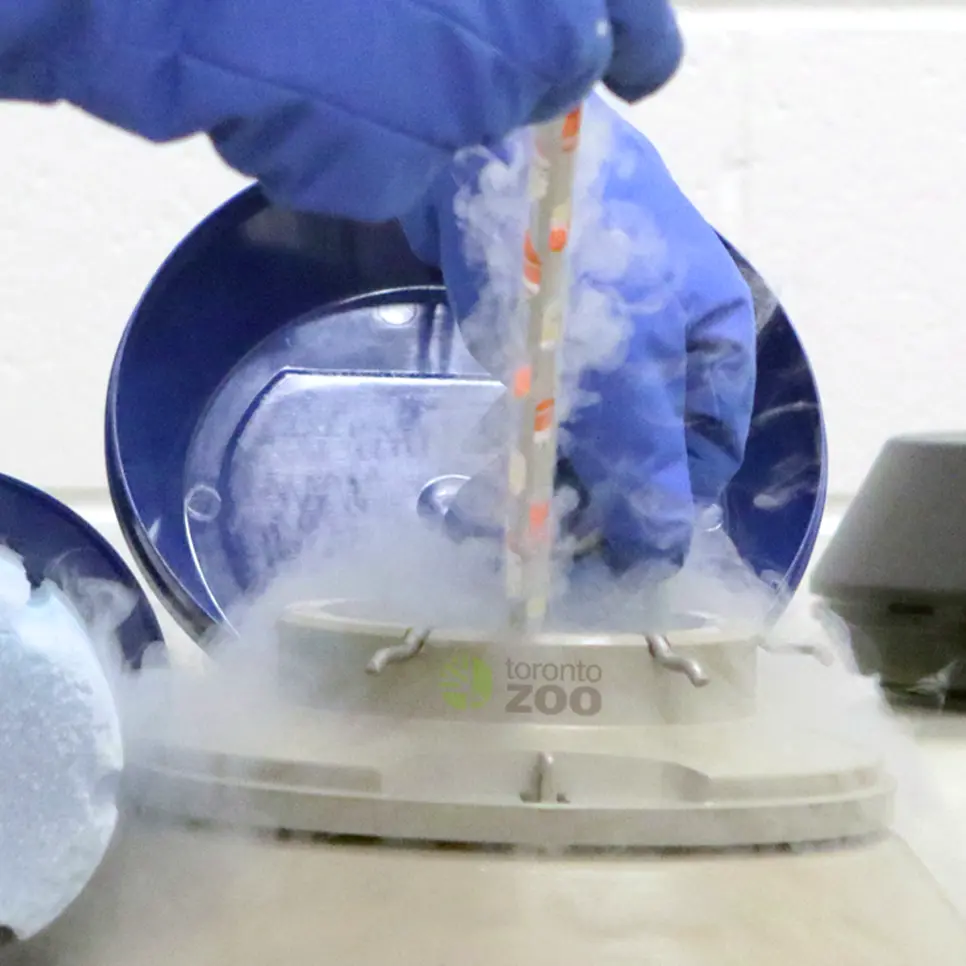
Reproduction at the cellular level
From assessing sperm and oocyte (egg) quality and producing in vitro embryos to breeding techniques such as artificial insemination and embryo transfer, we can use a range of assisted reproductive technologies (ARTs) to support wildlife conservation breeding efforts. Especially for endangered species, ARTs can resolve reproductive challenges and aid in restoring a struggling population.
Long term genetic preservation
For nearly 40 years we have been gathering and preserving valuable genetic material from some of the planet’s most endangered wildlife. Our cryobank includes living cells such as sperm, oocytes and embryos that are vital to support conservation breeding and species recovery efforts as well as non-living tissues that have been instrumental in helping to uncover crucial events in animal biology.
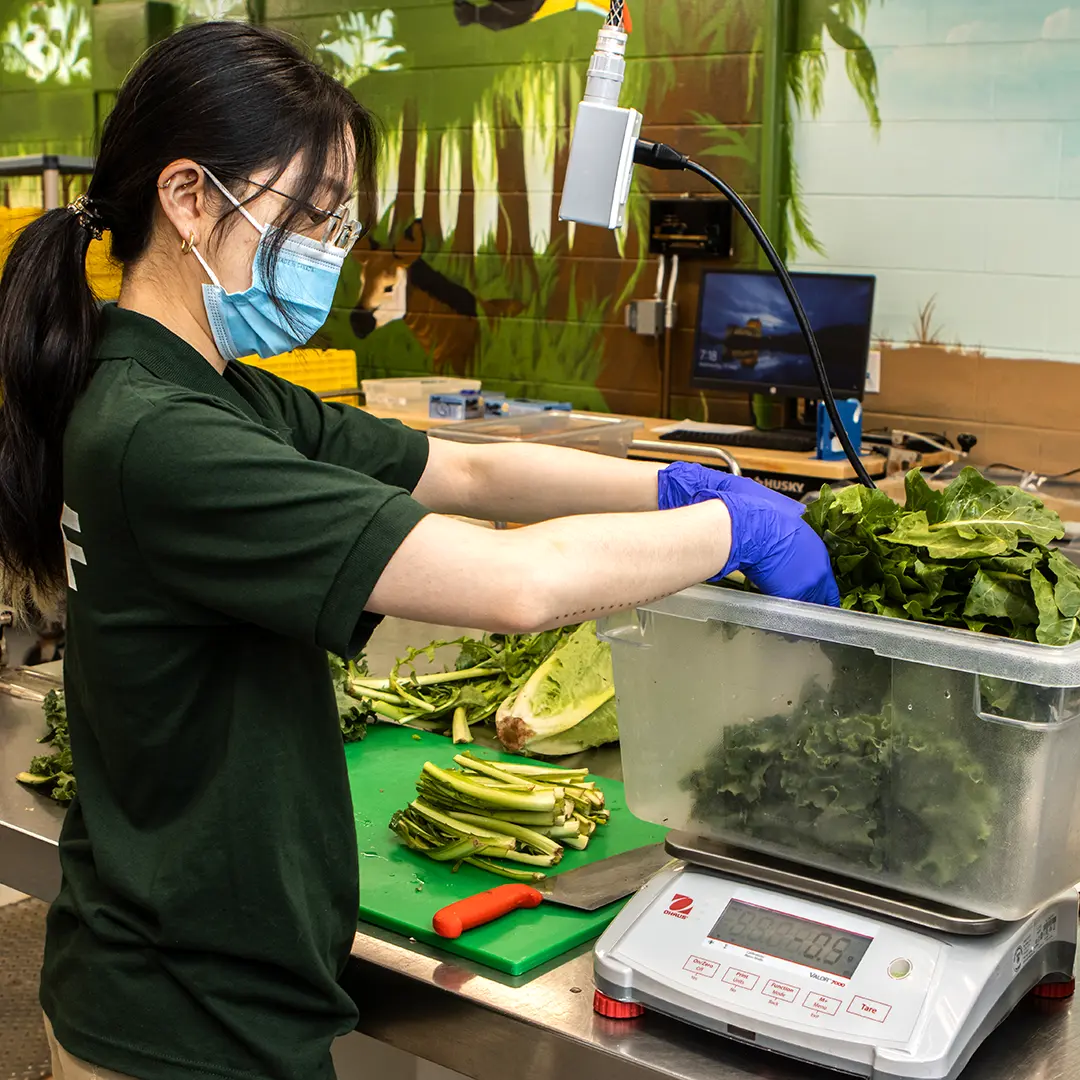
Wildlife Nutrition
The Nutrition Science program develops individualized diets tailored by species, season, and life stage. Our Food Production and Nutrition Research Units work together to support health from the inside out. Through our integrated and evidence-based approach to animal well-being, we aim to optimize health through nutrition by monitoring diets, behaviour, and physiology. Our goals are to address knowledge gaps within nutritional ecology and animal welfare, expand the use of innovative technologies to enhance non-invasive health monitoring, and drive conservation impact for both ex situ and in situ populations.
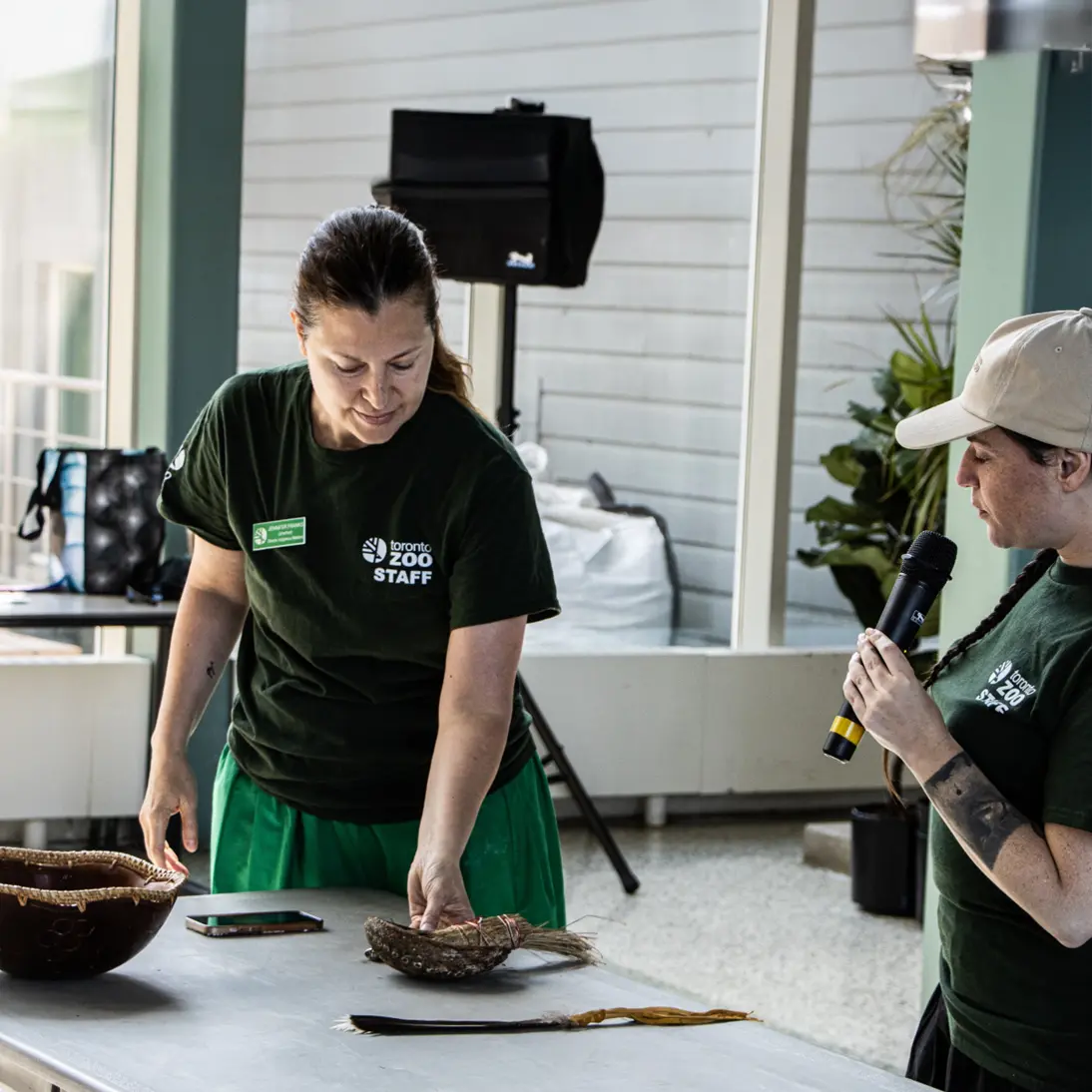
Indigenous Relations
We work in partnership with Indigenous communities, Indigenous scientists and knowledge keepers to gain a better understanding of how traditional land-based knowledge can be respectfully braided with conventional science. Integrating Indigenous knowledge systems is consistent with a holistic OneHealth approach and is being applied in a variety of areas, including select field conservation programs, and youth land stewardship initiatives.
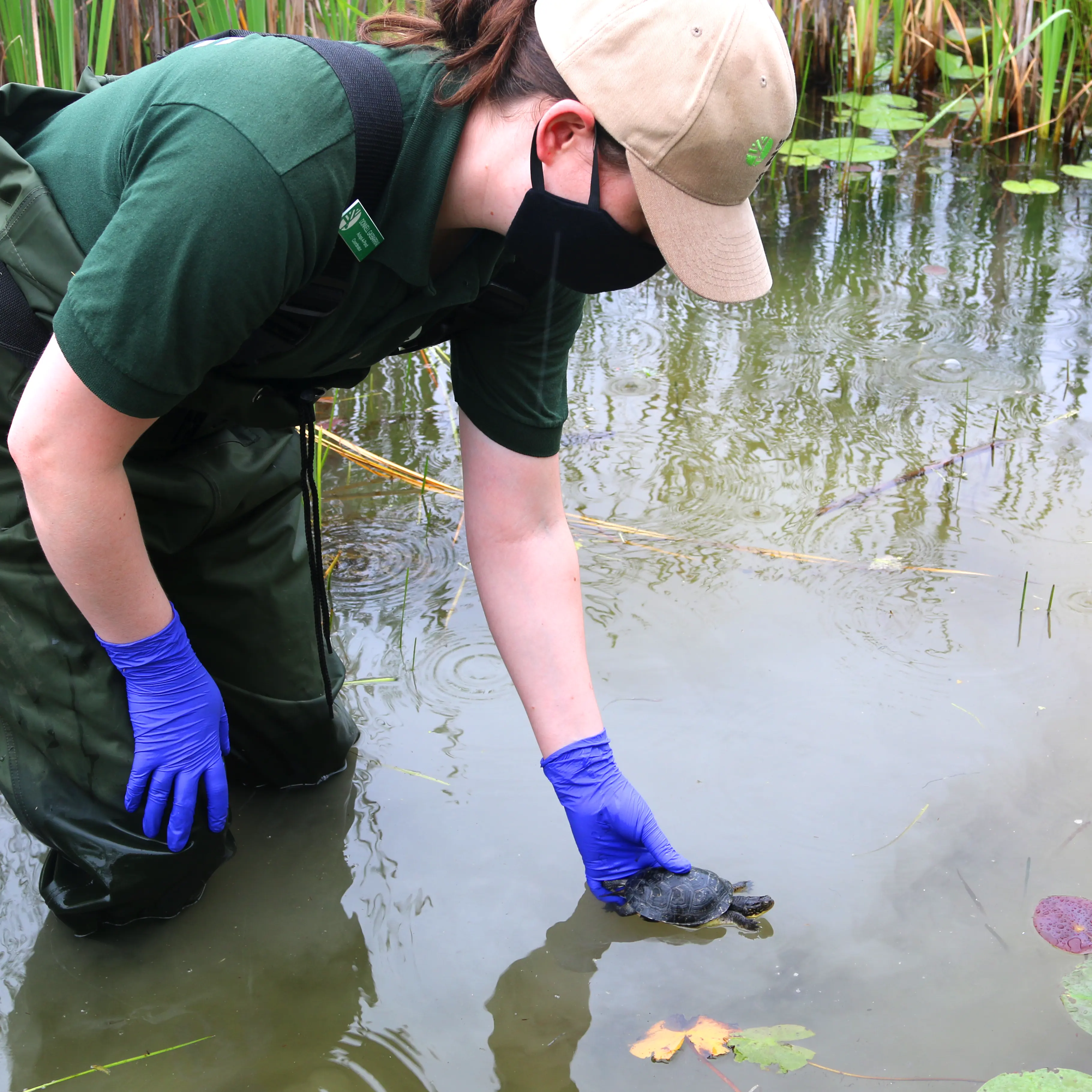
Conservation Breeding
At Risk Canadian species including the Vancouver Island marmot, Eastern loggerhead shrike, Blanding’s turtle and Eastern massasauga rattlesnake are helping to rebuild in-situ populations through our conservation breeding programs. Offspring born or hatched in the Centre are translocated to augment threatened wild populations and safeguard the species from local or global extinction. The Centre also serves as a living laboratory where we, and our academic partners, develop and enhance husbandry techniques to maximize the reproductive output of our program species.
Field Conservation
Following the One Plan Approach to conservation, which connects in situ and ex situ populations to protect and overcome biodiversity loss, our field teams monitor species at risk in Rouge National Urban Park and across Ontario with our government and Indigenous community partners, including Blanding’s turtles and bats. Expanding our understanding of landscape use and population health is critical to improving species restoration in urbanized or heavily modified areas.
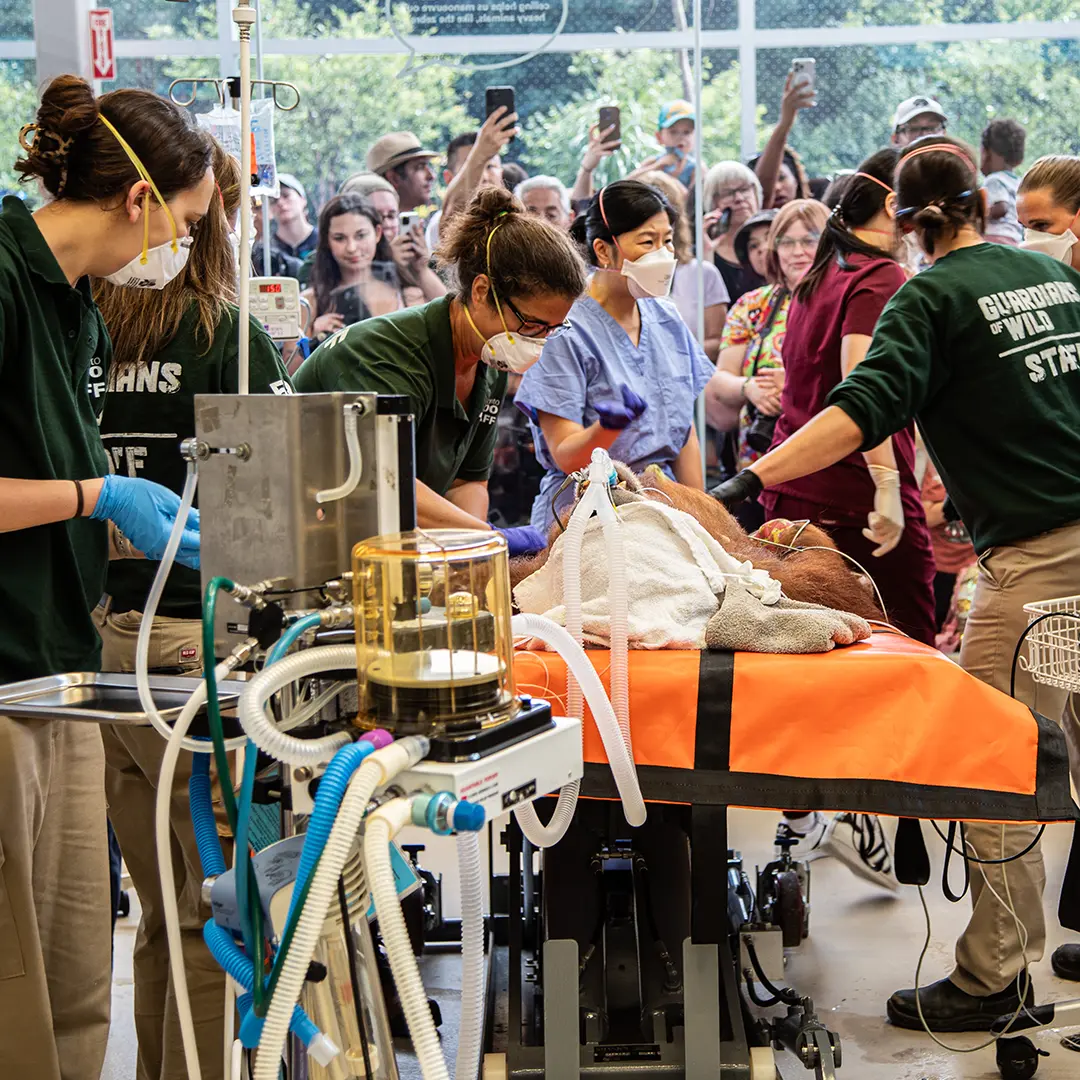
Partnerships and Collaboration
We work closely with Indigenous, academic and government conservation organizations to:
- Improve our understanding of wild species and their role in the ecosystem and their connection with local communities.
- Remain leaders in developing best practices for animal health and well-being.
- Safeguard biodiversity through the long-term storage of genetically valuable cells in our biobank
- Support wild populations through conservation breeding, reintroduction, and monitoring programs.
These partnerships expand our reach and make the Centre a critical link between in-zoo care and field-based restoration.
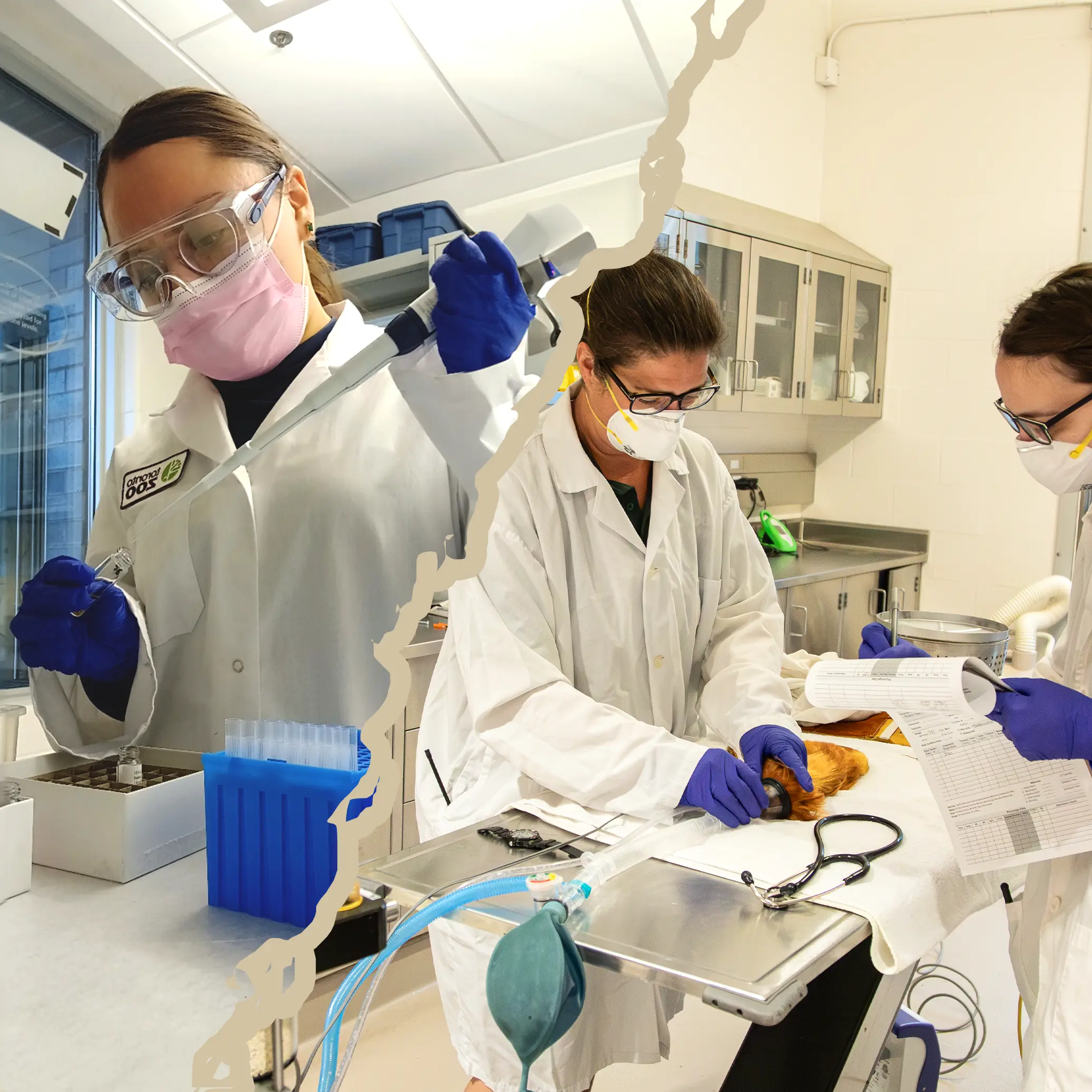
Training the Next Generation of Wildlife Conservationists:
University and college students, interns, and visiting researchers contribute to and learn from our ongoing projects. These experiential learning opportunities extend our impact and nurture the next generation of wildlife professionals.

Designed
for Innovation
The Wildlife Health & Science Centre spans over 50,000 square feet, purpose-built for excellence in animal care, research, and conservation. It balances functionality, sustainability, and the unique needs of wildlife.
Eco-wise Features include:
- Hygienic, animal-safe materials
- A green roof established with water-wise native plants
- Bird-friendly glazing on all windows
- Efficient LED lighting, low-flow systems, and
- High efficiency air-sourced heat pumps
- Native and drought-resistant landscape with oil/grit separator for water-wise filtration
- Energy-efficient white roof
Every element was chosen to support the well-being of the animals—and the future of global conservation efforts.

Get a Deeper Glimpse
Private guided tours offer a behind-the-scenes look at animal care and conservation in action, providing a rare and meaningful learning experience for guests of all ages.

Together we create a lasting impact.
Through your support today, you can help fund groundbreaking efforts to protect populations from extinction and reverse the accelerated decline of wildlife.
As Guardians of Wild, we can create a world where people, wildlife and wild spaces thrive.











